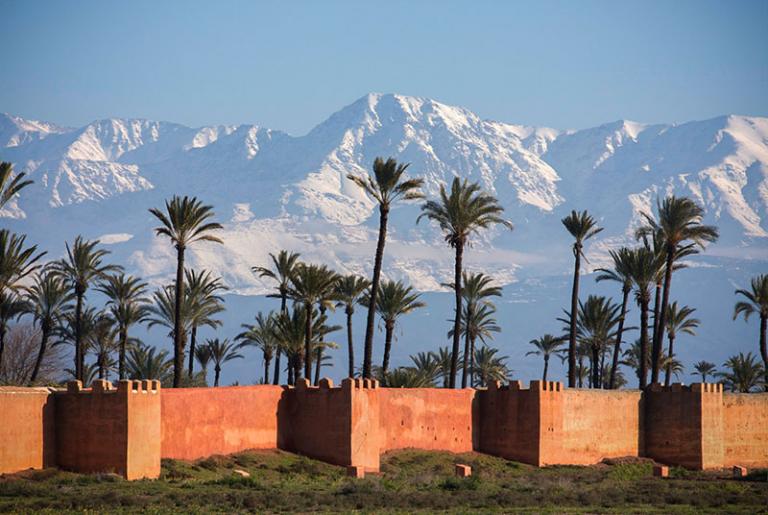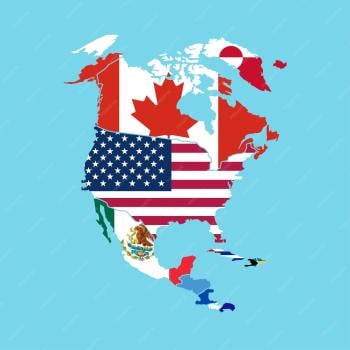[For an explanation of these 18 posts, see Part 1 published on 3/27/2019.]
 Illegal Immigration and Border Security
Illegal Immigration and Border Security
That is what some people in the world are crying out nowadays—“Don’t fence me in.” It certainly is happening in communistic North Korea. But more people are shouting, “Don’t fence me out.” Fences and walls are going up all over the world in order to create border security. “Security” has become the watchword for nations everywhere. It’s also a rallying cry for individuals. And it likely will continue for both.
Regarding nations, it’s mostly about illegal immigration. Impoverished people are leaving their home countries to seek a better life in some foreign land. The main reason is the lack of jobs at home. Poor national economies cause some people to uproot and move elsewhere. Rather than legally endure the time-consuming process of requesting legal immigration in a foreign land, if that nation even has immigration quotas, many of these desperate people avoid the proper path to citizenship and attempt to emigrate illegally.
Another cause of illegal immigration is war. The ongoing turmoil in the Middle East started with Arab Spring in 2011. Continuing civil war in Syria has caused millions of people to escape the path of war and illegally emigrate to neighboring states in Europe. But they’re coming from Afghanistan and North Africa as well.
Another problem is the ever-increasing illegal and violent narcotics trade that occurs in many parts of the world, especially in Latin America. Desperate people try to emigrate from these violent regions to the U.S. as refugees claiming asylum.
And then there is the so-called “war on terrorism.” It largely consists of violent groups claiming to be Muslim, such as Al Qaeda and ISIS. Such groups try to force their beliefs about religion and governance on others. They conduct widespread terrorism mostly in the Middle East, but also by infiltrating into Europe. On September 11, 2001, Al Qaeda hijacked four commercial airliners in the northeastern U.S., crashing three of them into buildings resulting in nearly 3,000 deaths. Ever since, the U.S. has tried to increase its border security to stop this infiltration of radical Muslims wishing to do harm.
No matter how many security patrols and electronic surveillance that nations put on their borders to stop illegal immigration, especially those nations that have lengthy borders, it seems to never be enough. So, nations are resorting to building some type of wall, fence, or a combination thereof on their borders to prevent the ever-increasing flood of illegal immigration and criminal activity.
There is a growing disparity among especially academicians and politicians about the building of walls and fences to prevent migration across national borders. Some advocate globalism and thus eschew nationalism and its borders. But that will not prevail.
The Bible says God instituted nations and their borders. Moses says in the Torah, “When the Most High apportioned the nations, when he divided humankind, he fixed the boundaries of the peoples” (Deuteronomy 32.8 NRSV). And the Apostle Paul preached at the Areopagus at Athens, Greece, saying of God, “From one ancestor he made all nations to inhabit the whole earth, and he allotted the times of their existence and the boundaries of the places where they would live, so that they would search for God” (Acts 17.26-27).
To some people, building walls seems like a nutty idea, an ancient technology for this modern century. But don’t knock it unless you’ve got a better idea! Jews are pretty smart people. Lots of technologically-innovative, start-up companies are springing up in Israel. Yet, to begin the new century, Israel began building a wall-fence called the West Bank Security Barrier. It has been immensely successful at keeping out non-desirables. Israeli Prime Minister Benjamin Netanyahu claims it is “over 99% successful.”
In our technological age, there also are “virtual fences.” They consist of border patrols using binoculars, sensors, cameras, thermal imaging, and other electronic devices as a more economical substitute for building walls and/or fences. But virtual fences do not seem to be as effective as good, physical barriers. Plus, they require more people to operate, analyze their data, and apprehend intruders who can more easily overcome them.
In 2006, the U.S. tried to secure the most critical portions of its porous, 2,00-mile border with Mexico by Congress passing the Secure Fence Act. In 2011, the Department of Homeland Security completed constructing 650 miles of physical barrier along the border. Half of it was pedestrian chain link fence (16-26 feet high), with infrared cameras on poles, and the other half consisted of objects to prevent vehicular intrusion. In 2017, a Government Accountability Office report deemed the fence rather futile. It said there had been 9,287 breaches of the fence at an average cost of repair being $784 for each breach. Yet most immigrants who negotiated the fence likely did so merely by climbing over it.
















